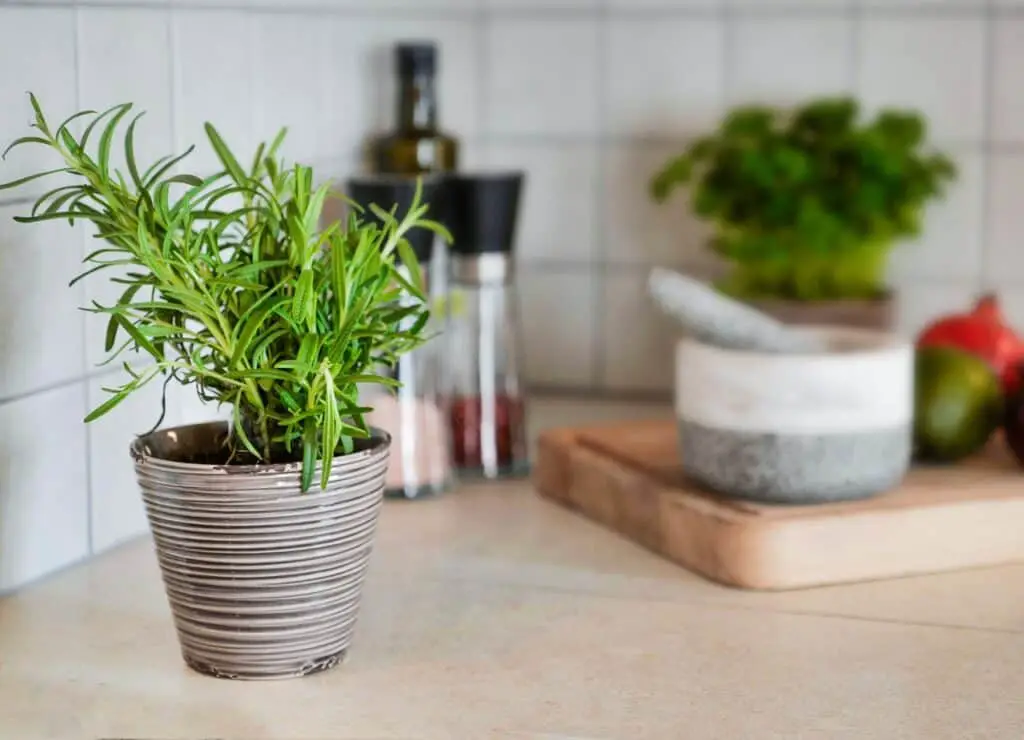Rosemary is a versatile herb that can be used for cooking, medicinal purposes, and even as an ornamental plant. One way to make the most out of its beauty is by training it as a topiary. In this article, we will discuss how to train rosemary as a topiary, along with some tips and tricks to help you achieve a beautiful and healthy plant.

Choosing the right rosemary plant
Not all rosemary plants are suitable for topiary. You need to choose a plant that has a strong, straight stem and compact growth habit. Look for a plant that is at least 6-8 inches tall and has a trunk that is 1/4 to 1/2 inch in diameter. Avoid plants with thin or weak stems, as they are not strong enough to support the topiary shape.
Materials needed
- A sharp pair of pruning shears
- Bamboo stakes or wireframe
- Twine or garden ties
- Potting soil
- Container
A step-by-step guide to training rosemary as a topiary
Step 1: Choose the right container
Choose a container that is at least 12 inches in diameter and has good drainage. Rosemary prefers well-drained soil, so make sure the container has drainage holes in the bottom. Use good quality potting soil that is rich in organic matter.
Step 2: Prune the rosemary plant
Pruning is an essential step in training rosemary as a topiary. It helps to shape the plant and encourages branching. Use sharp pruning shears to remove any dead, damaged, or diseased branches. Then, cut off the top 1-2 inches of the plant to encourage branching.
Step 3: Choose a shape
Choose a shape that you want to train your rosemary plant into. The most popular topiary shapes for rosemary are a ball or cone. You can use bamboo stakes or a wireframe to help you achieve the desired shape.
Step 4: Tie the plant to the frame
Tie the plant to the frame using twine or garden ties. Make sure the ties are not too tight, as this can damage the stem. Start at the bottom of the plant and work your way up, tying the branches to the frame as you go. As the plant grows, you will need to adjust the ties to ensure the shape is maintained.
Step 5: Water and fertilize
Rosemary prefers well-drained soil, so make sure the soil is moist but not waterlogged. Water the plant when the soil feels dry to the touch. Use a balanced fertilizer every 4-6 weeks during the growing season to promote healthy growth.
Step 6: Maintain the shape
Maintaining the shape of your rosemary topiary is an ongoing process. You will need to prune the plant regularly to keep it looking neat. Use sharp pruning shears to remove any dead, damaged, or diseased branches. Also, pinch back the tips of the branches to encourage branching and fill out the shape.
Tips for training rosemary as a topiary
- Start with a healthy, vigorous plant that has a strong stem and compact growth habit.
- Use a container with good drainage and fill it with well-draining soil.
- Choose a shape that is simple and easy to maintain, such as a ball or cone.
- Tie the plant to the frame loosely to avoid damaging the stem.
- Water the plant regularly and fertilize it every 4-6 weeks during the growing season.
- Prune the plant regularly to maintain its shape and encourage branching.
- Pinch back the tips of the branches to encourage branching and fill out the shape.
Maintenance and Pruning of Rosemary Topiary
One of the great advantages of training rosemary as a topiary is that it requires very little maintenance. However, regular pruning is necessary to maintain the shape and size of the topiary.
You should prune your rosemary topiary in the early spring, right before the new growth starts. You can use a pair of sharp pruning shears to trim the topiary into the desired shape. Be careful not to cut into the woody stems, as this can damage the plant.
You can also pinch off the tips of the new growth with your fingers to encourage bushier growth. This will create a fuller and more compact topiary.
In addition to pruning, make sure to water your rosemary topiary regularly. While rosemary is drought-tolerant, it still needs regular watering to thrive. Keep the soil moist, but not waterlogged, and make sure the pot has adequate drainage.

Conclusion
Rosemary is a versatile and attractive herb that can be trained as a topiary to add a touch of elegance and whimsy to any garden or indoor space. By following the steps outlined in this guide, you can successfully train your rosemary topiary and enjoy its aromatic leaves for years to come. Remember to choose a healthy plant, provide the right growing conditions, and regularly prune your topiary to maintain its shape and size. With a little patience and care, you can create a beautiful and functional piece of living art with your rosemary topiary.

